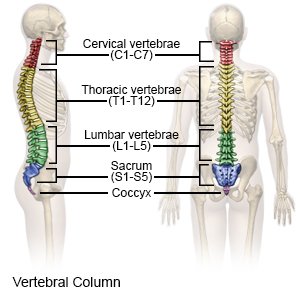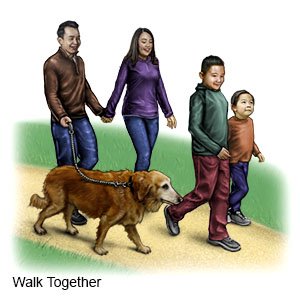Lumbar Radiculopathy
Medically reviewed by Drugs.com. Last updated on Aug 4, 2025.
Lumbar radiculopathy is a painful condition that happens when a nerve in your lumbar spine (lower back) is pinched or irritated. You may have numbness or pain that shoots down from your lower back towards your foot.
 |
DISCHARGE INSTRUCTIONS:
Return to the emergency department if:
- You have a fever higher than 100.4°F (38°C) for longer than 2 days.
- You have new, severe back or leg pain, or your pain spreads to both legs.
- You have any new signs of numbness or weakness, especially in your lower back, legs, arms, or genital area.
- You have new trouble controlling your urine and bowel movements.
- You do not feel like your bladder empties when you urinate.
Call your doctor or spine specialist if:
- Your pain does not improve within 1 to 3 weeks of treatment.
- Your pain and weakness keep you from your normal activities at work, home, or school.
- You lose more than 10 pounds in 6 months without trying.
- You become depressed or sad because of the pain.
- You have questions or concerns about your condition or care.
Related medications
Treatment options
The following list of medications are related to or used in the treatment of this condition.
Medicines:
You may need any of the following:
- NSAIDs , such as ibuprofen, help decrease swelling, pain, and fever. This medicine is available with or without a doctor's order. NSAIDs can cause stomach bleeding or kidney problems in certain people. If you take blood thinner medicine, always ask your healthcare provider if NSAIDs are safe for you. Always read the medicine label and follow directions.
- Muscle relaxers help decrease pain and muscle spasms.
- Prescription pain medicine may be given. Ask your healthcare provider how to take this medicine safely. Some prescription pain medicines contain acetaminophen. Do not take other medicines that contain acetaminophen without talking to your healthcare provider. Too much acetaminophen may cause liver damage. Prescription pain medicine may cause constipation. Ask your healthcare provider how to prevent or treat constipation.
- Steroid pills may help reduce swelling and pain.
- Take your medicine as directed. Contact your healthcare provider if you think your medicine is not helping or if you have side effects. Tell your provider if you are allergic to any medicine. Keep a list of the medicines, vitamins, and herbs you take. Include the amounts, and when and why you take them. Bring the list or the pill bottles to follow-up visits. Carry your medicine list with you in case of an emergency.
Physical therapy
may help improve your posture (the way you stand and sit), flexibility, and the strength in your lower back. Your physical therapist may also teach you how to remain safely active and prevent more injury.
Manage or prevent lumbar radiculopathy:
- Apply ice or heat. Ice and heat can help relieve pain or swelling. Put ice in a plastic bag covered with a towel on your low back. Apply ice for 15 to 20 minutes at a time, or as directed. Cover heated items with a towel to avoid burns. You can also use a heating pad on a low setting. Apply heat for 20 minutes at a time. Your provider may tell you to alternate ice and heat.
- Stay active. Your healthcare provider may tell you to take walks to ease yourself back into your daily routine. Avoid long periods of bed rest. Bed rest could worsen your symptoms. Do not move in ways that increase your pain. Ask your healthcare provider for more information about the best ways to stay active.

- Do not lift anything heavy. Heavy objects put a strain on your back and may make your symptoms worse.
- Maintain a healthy weight. Extra body weight may strain your back. Ask your provider what a healthy weight is for you. Your provider can help you create a safe weight loss plan, if needed.
- Do not smoke. Nicotine and other chemicals in cigarettes and cigars increase your risk for lumbar radiculopathy. Ask your provider for information if you currently smoke and need help to quit. E-cigarettes and smokeless tobacco still contain nicotine. Talk to your healthcare provider before you use these products.
Follow up with your doctor or spine specialist within 1 to 3 weeks:
After your first follow-up appointment, follow up every 2 weeks until you have healed, or as directed. Write down your questions so you remember to ask them during your visits.
© Copyright Merative 2025 Information is for End User's use only and may not be sold, redistributed or otherwise used for commercial purposes.
The above information is an educational aid only. It is not intended as medical advice for individual conditions or treatments. Talk to your doctor, nurse or pharmacist before following any medical regimen to see if it is safe and effective for you.
Learn more about Lumbar Radiculopathy
Treatment options
Care guides
Further information
Always consult your healthcare provider to ensure the information displayed on this page applies to your personal circumstances.
